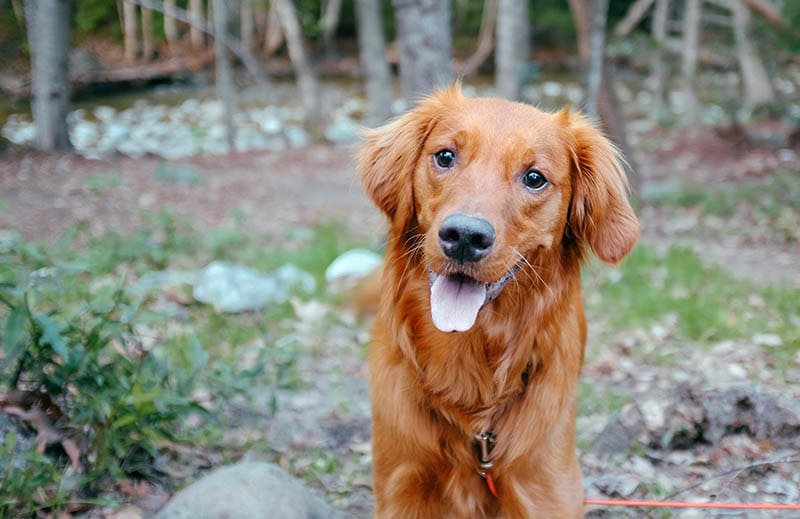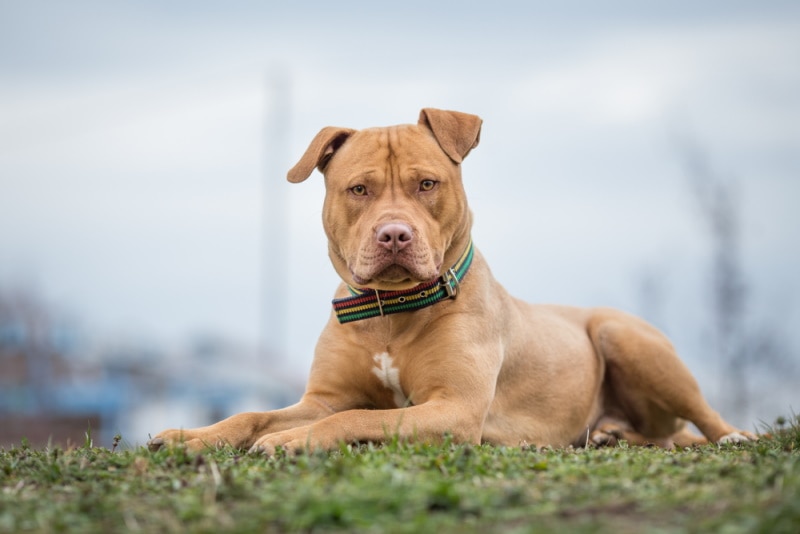Can You Use Cat Flea Collars on a Dog? Vet-Reviewed Facts & FAQ
By Oliver Jones
Updated on
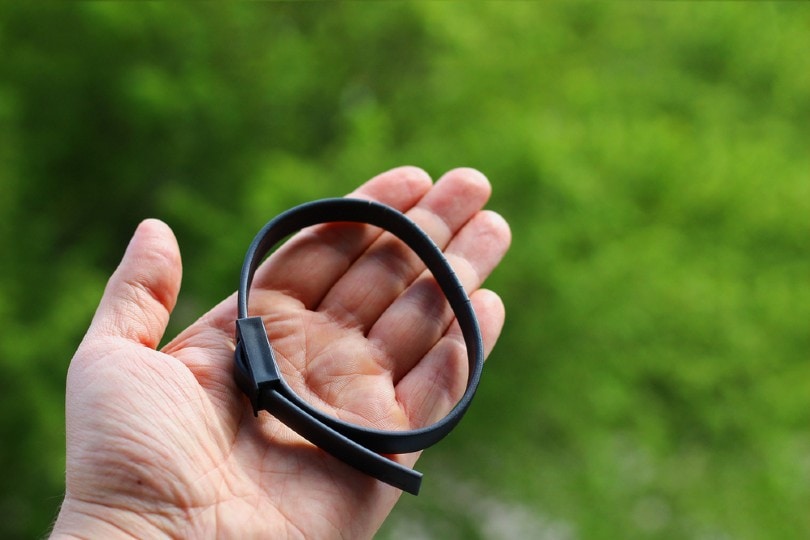
Click to Skip Ahead
If you’re concerned about using a collar on a dog, there are other ways to treat a flea infestation. These include spraying your house regularly with an insecticide like Frontline, getting rid of any bedding that could be hiding fleas, and vacuuming up as much dirt as you can. If all these other options aren’t enough for your dog, talk with your vet about what else might be going on, so you can book an appointment to get them checked out.
Why Dogs Shouldn’t Wear Cat Flea Collars
Let’s be honest, the only dogs that could truly wear a cat flea collar are puppies or small dogs that are about the same size as a cat. Otherwise, the collar simply wouldn’t fit on larger dogs. But even though small dogs technically can wear a flea collar designed for cats, it’s not recommended.
This is because the chemicals in cat and dog flea collars are slightly different, and flea collars designed for cats may not be as effective at treating fleas in dogs. The chemicals in flea treatments can also cause nervous system problems and toxicity in smaller dogs or cats, although this is more common with topical flea treatments than with flea collars. It’s also important that you never use a flea product designed for dogs on a cat.
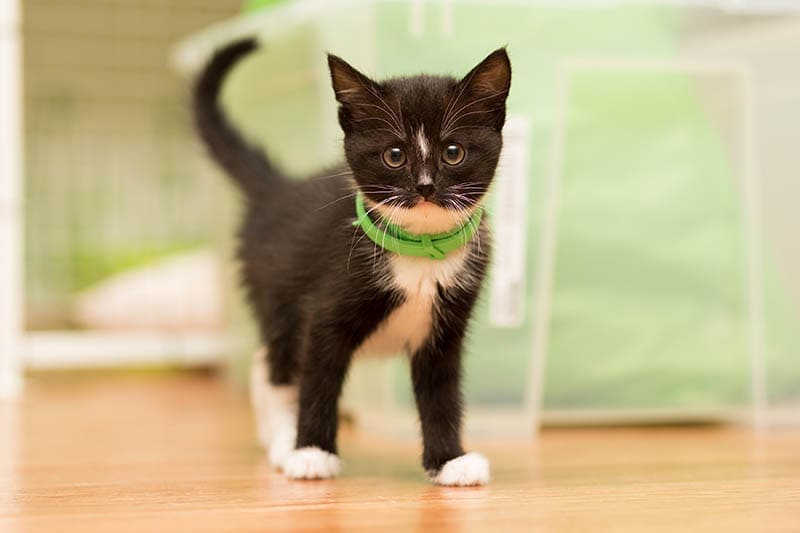
Why Flea Collars Are So Important for Your Canine Friends
You probably know that fleas can pose a problem for dogs. They not only make them miserable, but also put them at risk of contracting a lot of diseases from these blood-sucking insects. You might think that the best thing to do is to get your dog some flea shampoo and give him a good scrubbing. However, this will only treat the symptoms and not the cause of the problem.
Keeping fleas away from your dog in order to protect him from them in the future is what you need to focus on instead. There are several ways you can do this, one of which is through using flea collars designed for dogs. Read on to find out more about why they’re so important and why we should always have one accessible when we need them if we’re going to own cats or any other kind of pet that’s susceptible to fleas.
Fleas and Their Habitat
Fleas are a type of insect that can live on a whole host of different animals, including dogs and cats. However, their preferred host is a rodent. They can live in any environment, but they prefer warm places. Thus, you’ll find them most often in the house.
Fleas can also live outdoors in a rodent’s nesting ground, but this isn’t as common. These pests are capable of jumping from one host to another, so if you have a dog, there’s a chance you’ll find fleas in your home. However, you can prevent this and keep your dog safe by using a dog flea collar.
Why Flea Collars Are So Important
As we’ve already seen, fleas are a very real threat to your canine friend’s health. Having just one or two of these insects on your dog’s fur can cause him a whole lot of discomfort and distress, as well as itching. An infestation of fleas can be even worse, potentially leading to anemia and even death. Flea collars are an excellent way to keep these dangerous insects away from your dog.
Flea collars are applied directly around your dog’s neck and work to prevent fleas from laying eggs on its skin. They also kill any fleas already feeding on your dog, meaning you can get rid of an infestation quickly and efficiently. A flea collar is one of the most effective ways to prevent fleas on your dog.
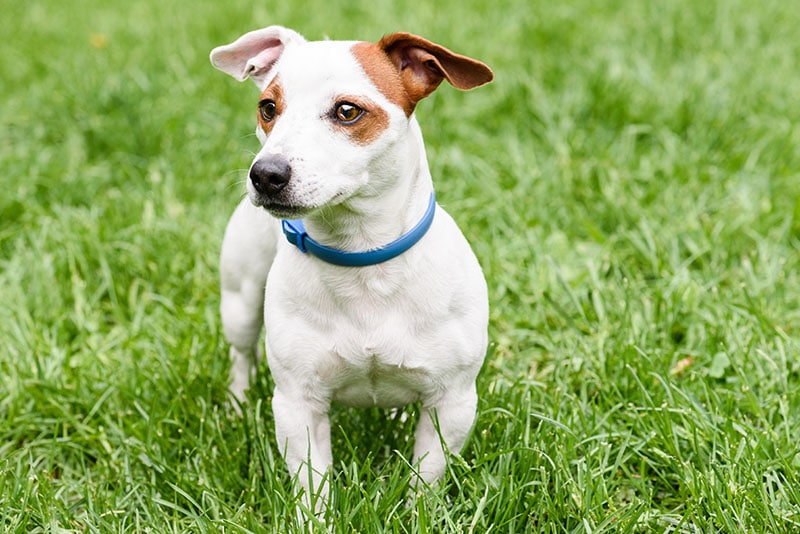
How Does a Flea Collar Work Exactly?
Flea collars are made from natural and specially formulated ingredients that fleas are not fond of. Fleas have a very specific way of surviving on animals. They feed on blood and lay their eggs on the host’s skin. They prefer the neck and armpits of humans and animals, as they are warm and easy to access without being seen. Flea collars prevent the fleas from laying their eggs.
Thus, the collars keep the host (your dog) flea-free until they die off. Collars usually have a substance that kills fleas as well. It usually takes up to two weeks for the fleas to die, but they do die eventually. Flea collars are super simple to use. You can clip them around your dog’s neck or put it on them with the use of a safety pin. Some collars are even made for pups. Be sure to read the instructions before putting your flea collar on your dog.
What to Look for When Choosing a Dog Flea Collar
There are several things you should keep in mind when selecting a dog flea collar. First of all, you should make sure you choose a collar that’s meant for dogs. If you choose one that’s meant for small dogs, for example, it will not be effective on your feline friend.
It’s important to read the label on the collar carefully to make sure it’s suitable for your dog. A good flea collar should last for around eight months, so you’ll need to replace it every year anyway. Make sure the collar you choose is long-lasting and reliable.
Benefits of Using Flea Collars
These collars are easy to use, safe, and long-lasting. Flea collars for dogs can protect from fleas for up to eight months, giving them ample time to grow immune to allergens and become flea-free.
You can either put them on your dog manually or purchase a collar that comes with a tool for easier application. If you choose a collar that kills fleas, it will protect your dog from flea bites while it’s still growing inside the house. Flea collars are an excellent choice if you have a dog or young pup that hasn’t had its full set of vaccinations yet.
Negative Sides of Using Cat Flea Collars
There aren’t really any major drawbacks to using dog flea collars. However, since flea collars do not kill the fleas that are already feeding on your dog, you’ll have to remove them manually or use a flea-killing spray, shampoo, or lotion once you’ve applied the collar. This can be a bit tricky, as fleas tend to hide in the armpits and neck of mammals, making them hard to remove manually.
It usually takes about a month for the fleas to die off completely. In the meantime, your dog may still have those little insects feeding on him and making him miserable. Some dogs have allergic reactions to the ingredients in flea collars. If you notice your pooch scratching a lot, he/she might be allergic to the flea collar.
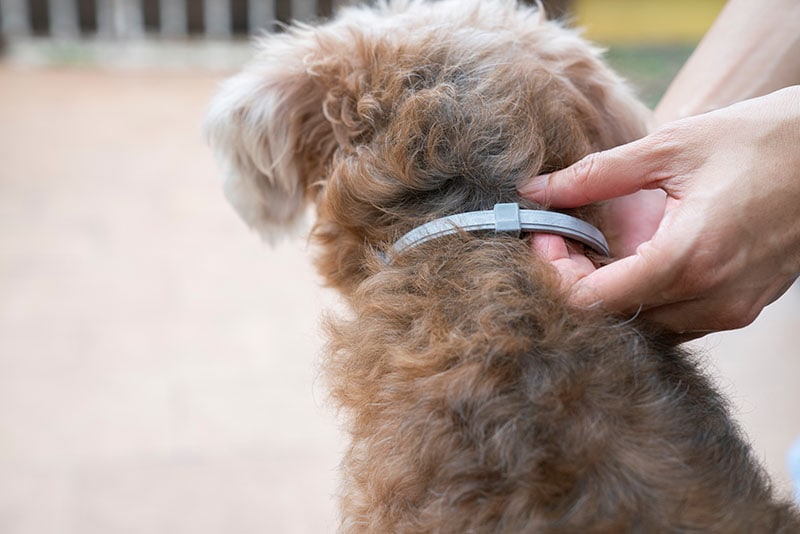
Preventing Dog Fleas
It’s important to take precautions when it comes to flea prevention. Here are a few ways you can keep fleas from ruining your happy little doggy day:
- Preventative care is key. If your dog has been outside recently, it’s important to keep them inside until they’ve had time to dry off and shake off any fleas they may have picked up along the way. This will help prevent any new ones from moving in as well.
- Wash your dog regularly and keep their coat nice and clean.
- Treat your home regularly with an insecticide that kills fleas and ticks on contact.
- Keep your yard mowed and free of debris so that fleas can’t hide there too.
Checking Your Dog for Fleas
Fleas can cause a lot of damage to your pet if they’re not dealt with. They can spread disease, causing anemia and inflammation in the body. They can also cause skin irritation and allergies, as well as discomfort and itching.
Many of these symptoms may seem like they’re minor, but it’s best to take them seriously and deal with the problem soon. A dog that has fleas is more likely to pass flea dirt onto other people in the home, so it’s important to catch the problem early on. It’s important to check your dog for fleas on a regular basis. This is especially true if you have a young dog or if your dog has been exposed to an outdoor environment where fleas are known to live.
The most obvious sign is the presence of flea dirt. Flea dirt consists of tiny flea eggs and larvae that are expelled from the host as it goes through its larval stage. A healthy dog will have a thick coat that prevents flea dirt from being visible, but a thin-coated dog may show flea dirt if it has recently been in an area where fleas are common or if it was recently groomed.
Another sign of fleas is the presence of feces on the pet’s fur, particularly around the tail. Flea feces help nourish the larvae while they are maturing inside the host. If you suspect that your dog has fleas, thoroughly check the pet’s environment for signs of infestation. Look for bedding or carpet that has been infested with fleas, as well as any other pets that may also be infected.
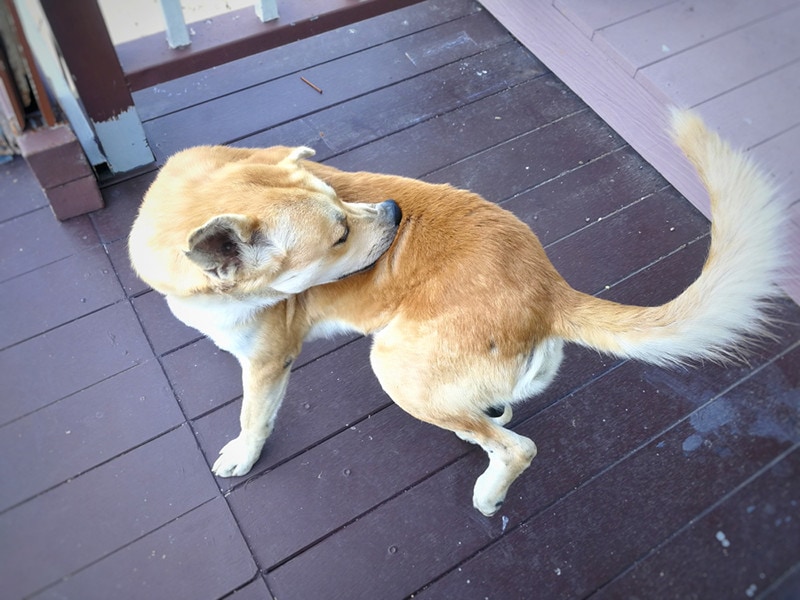
Wrapping Things Up
Dogs are very susceptible to fleas, and they can also pass them on to us humans. That’s why it’s so important to protect them from these tiny pests. Flea collars are an excellent way to do this.
However, it’s always best to give your dog a collar that is formulated specifically for dogs and not cats. If your dog is on the smaller side, you can even find places that offer specialized collars or use other methods to help control fleas. And in many cases, it helps to consult your veterinarian before using a cat flea collar just to ensure that it’ll work.
Featured Image Credit: Gagarin Iurii, Shutterstock






